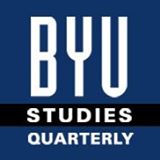BYU Studies Quarterly

Keywords
Mormon studies, Joseph Smith, pneumatology, Holy Ghost, Bible
Abstract
While Joseph Smith's teachings on the Holy Ghost appear to fall within the mainstream of the enthusiastic outbursts of the Second Great Awakening (circa 1800–1840), a closer look shows that his restored doctrines made an abrupt and radical departure from the pneumatology of his day. Many historians interpret Joseph's claim to revelation as a creative response to the cultural and religious stimulus of the "Burned-over District" in upstate New York. Focused research suggests that Joseph Smith's teachings on the Holy Ghost were not merely a product of his environment or a reaction to his culture. His biblical interpretations of the Spirit were not consistent with that of the clerics of his day. This article is the first academic publication to fully compared Joseph Smith's pneumatology with that of his colleagues.
Recommended Citation
Wilson, Lynne H.
(2012)
"A New Pneumatology: Comparing Joseph Smith's Doctrine of the Spirit with His Contemporaries and the Bible,"
BYU Studies Quarterly: Vol. 51:
Iss.
1, Article 8.
Available at:
https://scholarsarchive.byu.edu/byusq/vol51/iss1/8

